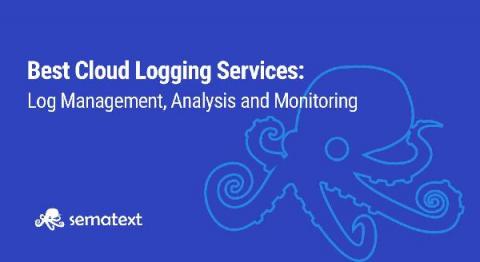Operations | Monitoring | ITSM | DevOps | Cloud
Cloud
The latest News and Information on Cloud monitoring, security and related technologies.
9 Best Cloud Logging Services for Log Management, Analysis, Monitoring & More [2021 Comparison]
Log management stopped being a very simple operation quite some time ago. Long gone are the “good old days” when you could log into the machine, check the logs, and grep for the interesting parts. Right now things are better. With the observability tools that are now a part of our everyday lives, we can easily troubleshoot without the need to connect to servers at all. With the right tools, we can even predict potential issues and be alerted at the same time an incident happens.
GKE operations magic: From an alert to resolution in 5 steps
As applications move from monolithic architectures to microservices-based architectures, DevOps and Site Reliability Engineering (SRE) teams face new operational challenges. Microservices are updated constantly with new features and resource managers/schedulers (like Kubernetes and GKE) can add/remove containers in response to changing workloads. The old way of creating alerts based on learned behaviors of your monolithic applications will not work with microservices applications.
How Artificial Intelligence Enhances Customer Service Management?
Throughout the world, the business and service sectors thrive on the best customer service management practices to ensure customer retention, boost customer sentiments to increase the profitability and branding of their business. But amidst the emerging technological advances, AI (Artificial Intelligence), as it is well known, is turning the table for businesses in winning the game of gaining customer trust and loyalty.
Splunk App for Amazon Connect: End-to-End(point) Visibility for an Optimal Customer Experience
How do you ensure a customer experience (CX) that leaves both participants of a conversation not just satisfied, but elated afterwards? And how do you do that, thousands of times over the course of a day and millions of times a year?
10 Simple AWS Hacks That Will Make You Super Productive
Useful AWS hacks and tricks that will save you time and money. If you work a lot with AWS, you probably realized that literally, everything on AWS is an API call; hence everything can be automated. This article will discuss several tricks that will save you time when performing everyday tasks in the AWS cloud. Make sure to read till the end. The most interesting one is listed at the very end 😉
Elastic and Alibaba Cloud: Reflecting on our partnership and looking to the future
Alibaba Cloud is an important partner to us here at Elastic. We officially started our collaboration and strategic partnership with Alibaba Cloud back in 2017, when we announced the Alibaba Cloud Elasticsearch service. Since then, we’ve seen rapid adoption and growth of the service, which now supports more than 10 petabytes of data.
How CloudZero Measures Cost Per Customer
Hybrid IT and Virtualized Workloads Preparing for a Shift to Microsoft Azure
Cloud Migration Strategy [Guide]
Migrating to cloud infrastructure is one of the most critical requirements for modern enterprises to ensure long-term sustainability. Initially, there was a general apprehension about adopting cloud technology and developing a cloud migration strategy; certain aspects like security and resilience were concerns. But today, with increasing technological advancements and familiarity, there is not an iota of doubt that the advantages of adopting cloud technology have far outnumbered the few drawbacks.










